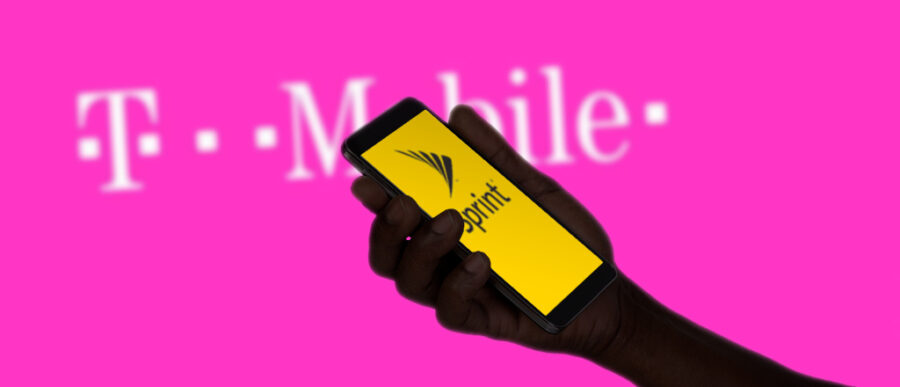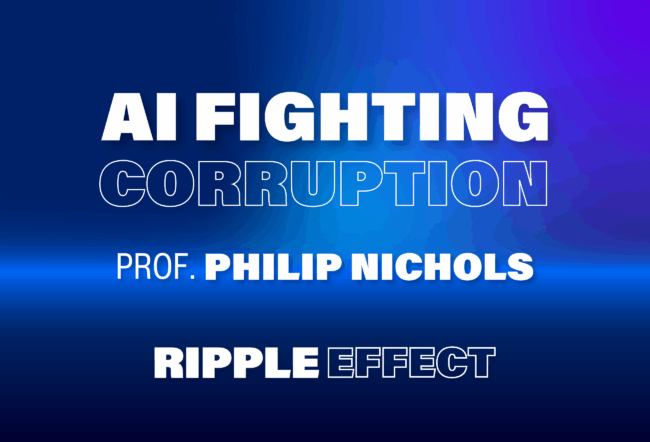T-Mobile and Sprint, the nation’s third and fourth largest wireless telecom companies, have been trying to tie the knot for years. But concerns that regulators won’t approve a merger because it would reduce competition have kept them apart. Their antitrust concerns are not unfounded: In 2011, the U.S. Justice Department torpedoed AT&T’s planned $39 billion acquisition of T-Mobile. Three years later, Obama’s FCC chairman, Tom Wheeler, bluntly told Sprint he was skeptical such a deal would be approved.
That was then, this is now. Today’s FCC is more business friendly, chaired by Republican Ajit Pai and with a GOP majority among its commissioners. Meanwhile, T-Mobile and Sprint are arguing that the wireless landscape is getting more competitive so their merger would not harm consumers. They point to cable giant Comcast launching Xfinity Mobile last year — signing up 577,000 wireless customers in short order — and plans by Charter, the no. 2 cable operator, to offer wireless phone service soon. In 2015, Google also jumped into wireless with Project Fi.
T-Mobile CEO John Legere, the industry’s long-haired, trash-talking maverick, said the merger is necessary in order to have the resources to compete effectively against his biggest rivals. “Dumb and dumber [Verizon and AT&T], Wifi and Son of Wifi Pipe [Comcast and Charter] are the big competitors,” he said in a CNBC interview. Raising his right hand, he pledged on national TV to create jobs, lower prices and invest more. T-Mobile and Sprint together, Legere said, will be a “disruptive force for good.”
And Legere’s biggest carrot to regulators? Building a national 5G network that can carry 100 times more data at speeds 100 times faster than 4G. Right now, the U.S. lags behind China and South Korea in 5G build out, according to the wireless trade group CTIA. “Only T-Mobile and Sprint can do this together,” Legere said in a company video. “We can’t do this separately and neither can Verizon and AT&T nor any of the other new players.” Verizon and AT&T don’t have a lot of extra spectrum for 5G and a new technology they’re testing is too costly to roll out nationally.
But has the environment changed sufficiently that T-Mobile’s acquisition of Sprint will not be dead on arrival in Washington? “I’d be very surprised if Ajit went along with this,” said Gerald Faulhaber, Wharton professor emeritus of business economics and public policy and former FCC chief economist. According to an FCC report, the weighted average of a widely used market concentration metric, the Herfindahl-Hirschman Index (HHI), was 3,101 for mobile wireless services at the end of 2016. The Justice Department’s horizontal merger guidelines say that a market is considered highly concentrated with HHI of above 2,500.
“I’d be surprised if the third time is a charm. Market shares are pretty high. Post-merger, you’d have three firms with more than 30% of the market each.”–Herbert Hovenkamp
A Tough Road Ahead in Washington
This is the third time that T-Mobile and Sprint reportedly talked about merging — and the same challenges remain. “I’d be surprised if the third time is a charm. Market shares are pretty high. Post-merger, you’d have three firms with more than 30% of the market each. Under the orthodox approach that the merger guidelines take, that would be a clearly challengeable merger,” said Herbert Hovenkamp, a Penn Integrates Knowledge professor at the University of Pennsylvania, with dual appointments at Wharton and Penn Law, on the Knowledge at Wharton show on SiriusXM channel 111. (Listen to the podcast at the top of the page.)
Hovenkamp pointed to another hurdle: Unlike other wireless telecom mergers that need approval by both the FCC and Justice Department, this one also needs to be greenlit by The Committee on Foreign Investment in the United States (CFIUS). That’s because T-Mobile is owned by Germany’s Deutsche Telekom and Sprint is majority owned by SoftBank of Japan. “We’ve got three agencies this time that need to approve this merger,” he said.
Moreover, the committee, which falls under the U.S. Treasury, is subject to the presidential executive order, Hovenkamp said. In March, the Trump administration sank the acquisition of U.S. chipmaker Qualcomm by Broadcom, a U.S. chipmaker acquired by a Singaporean company that is now relocating back to America. Trump “could probably do that this time again,” he said. “There’s a whole lot of uncertainty facing this merger.”
As for T-Mobile’s enticement of launching a 5G network faster than its competitors could? “The one thing we’ve learned from decades of merger policy is companies always hold out the promise of some future or nascent product or technology and say, ‘well, the merger’s going to facilitate the development of that,’” Hovenkamp said. “The Justice Department, I think, wisely looks mainly at the short run, like what’s going to happen to pricing in the next four or five years where we’re certainly going to have greater concentration in the cell phone market.”
Instead, regulators would rather see T-Mobile and Sprint form a partnership to build the 5G network. “The Justice Department would prefer that you do it by license. At this stage, it’s not even clear that having more rather than fewer competitors developing 5G is going to make all that much difference one way or another,” Hovenkamp said. “There’s been testimony on both sides. This is all very abstract. And it’s not the kind of evidence that the Justice Department is likely to countenance when it’s considering whether there’s offsetting efficiencies.”
Merger law, importantly, doesn’t allow “gains in different markets to [offset] an actual predicted price increase in one market,” Hovenkamp said. “If the predicted prices for cell phone service in, say, texting are going to go up, that would be sufficient to condemn the merger, and future development in other technologies are simply not going to operate as an offset to that.” He also pointed out that historically, cell phone pricing has been “quite responsive” or sensitive to greater market concentration.
“AT&T and Verizon are sitting in a club and they want to keep the other two guys out.”–Hemant Bhargava
It is preferable for T-Mobile and Sprint to remain as separate entities, added Hemant Bhargava, technology management professor at the University of California, Davis, on the radio show. Combining the two would result in another big company joining the two. “AT&T and Verizon are sitting in a club and they want to keep the other two guys out. But once those two merge and enter the club, they’ll be part of the club. Then it would not be more competition,” he said. “It’s possible they will now start behaving like the big bad guy rather than the maverick.”
According to the latest FCC figures, Verizon held a 35% market share at the end of 2016, with 146 million wireless connections. AT&T was second at 32.4% with 135 million while T-Mobile and Sprint were at 17.1% with 71.5 million and 14.3% with 59.5 million, respectively. Last year, Verizon posted wireless revenue of $87.5 billion compared with $71.3 billion for AT&T’s wireless unit. Both were down 2% from a year ago. T-Mobile had revenue of $40.6 billion, up 8%. Sprint came in at $33.3 billion in 2016, up from $32.2 billion. It hasn’t yet reported full 2017 results.
A Carrier to Rival AT&T, Verizon
On April 29, T-Mobile announced that it was acquiring Sprint in an all-stock deal worth $26.5 billion based on the closing prices in the prior trading day. Together, they would command more than $70 billion in annual revenue, close to AT&T’s wireless revenue but still well shy of Verizon’s wireless business. T-Mobile and Sprint will serve more than 90 million customers, coming closer to AT&T and Verizon. But investors were skeptical of the deal; shares of both companies fell sharply after the news.
T-Mobile and Sprint expect the merger to save more than $6 billion a year mainly from network cost sharing and back office efficiencies. They plan to invest about $40 billion over the next three years, create jobs on a net basis and launch nationwide 5G connectivity. T-Mobile CEO Legere will be the CEO of the new company and Mike Sievert, T-Mobile’s COO, will be president and COO. Sprint CEO Marcelo Claure and SoftBank CEO Masayoshi Son will join the board. Deutsche Telekom will own 42% of the new company while SoftBank will hold 27%.
Legere has been credited with reviving T-Mobile after taking the helm in 2012. He has changed the image of T-Mobile to one that is bent on disrupting its stodgy telecom rivals. The company’s “Un-carrier” moves include getting rid of “overages” or fees tacked on after one exceeds calling minutes or data buckets. It got rid of contracts. It offered free data roaming in more than 140 countries. Its “BingeOn” program offers free video streaming for customers who signed up for higher data plans. Under Legere, T-Mobile overtook Sprint as the third largest carrier in 2015.
“As of right now, I don’t see any clear proof of gains that could be had only if this merger is completed — and that’s what the antitrust enforcers will be looking for.”–Herbert Hovenkamp
But even as Legere contends that T-Mobile’s disruptor role will get “supercharged” after it acquires Sprint, Bhargava thinks it’s better for the public welfare if they remain separate. As the smaller and financially weaker carriers, he said, they could be targets for partnerships or acquisitions by non-telecom companies wishing to enter the wireless market, say Google or Apple. Then there will be four big wireless carriers of similar size, not three.
Most people know the four major carriers but there are actually many mobile services in the market. Bhargava noted that not only do they have their own sub-brands (Sprint’s Boost and AT&T’s Cricket, for example) but there are also regional carriers such as U.S. Cellular, C Spire and others. In addition, there are mobile virtual network operators (MVNOs) such as TracFone, owned by Mexican telecom giant America Movil, that are able to offer wireless service to consumers by renting capacity from the Big Four. Google and Comcast, meanwhile, use both Wifi hotspots and rented telecom capacity.
However, looking at these services more closely reveals that most rely on the telecom infrastructure of the Big Four. Comcast and Google are able to offer nationwide mobile coverage only by renting capacity from Verizon, as well as T-Mobile and Sprint, respectively. Wifi hotspots are good if people stay in one place but don’t work well when they are mobile, Bhargava said.
So, for a non-telecom disruptor to come into the wireless industry and offer national coverage, it needs to partner with or acquire one of the Big Four since it would need the infrastructure such as cell towers and spectrum. Being smaller, T-Mobile and Sprint each could be easier targets. But if they are allowed to merge, they would be bigger and harder to take over. “Leaving them independent really opens up … the wireless industry to major competition,” Bhargava said.
Another idea to ensure competition is to “nationalize” wireless networks and remove the chokehold of the Big Four, Bhargava added. The government would own it for the public good and allow private companies to offer services on it. But he concedes that nationalization probably won’t fly in the U.S. In January, the Trump administration proposed the nationalization of a 5G network to guard against Chinese cybersecurity threats. But the FCC, wireless companies and some lawmakers opposed the idea.
With all these challenges ahead, where does it leave the marriage plans of T-Mobile and Sprint? Back to square one, most likely. “The complexities [of the wireless industry] are not ones that counsel in favor of this merger based on the provable facts we have now,” Hovenkamp said. “Five years from now, maybe we’ll conclude differently. But as of right now, I don’t see any clear proof of gains that could be had only if this merger is completed — and that’s what the antitrust enforcers will be looking for.”



